
 i_need_contribute
i_need_contribute
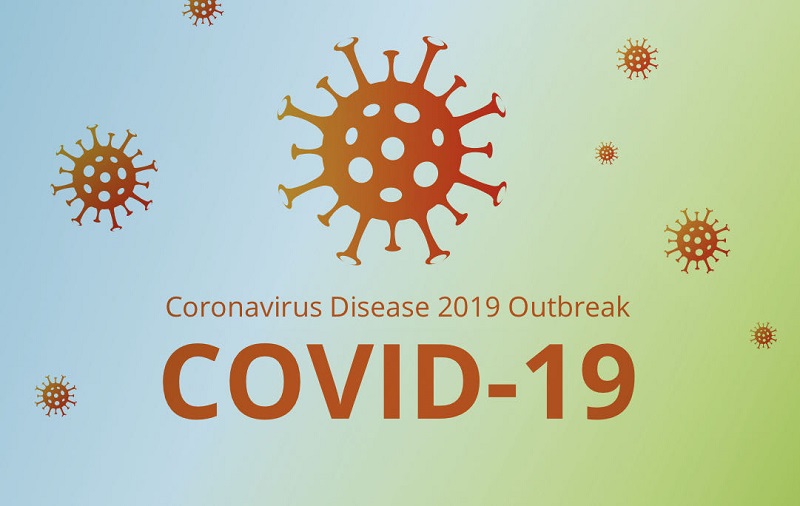
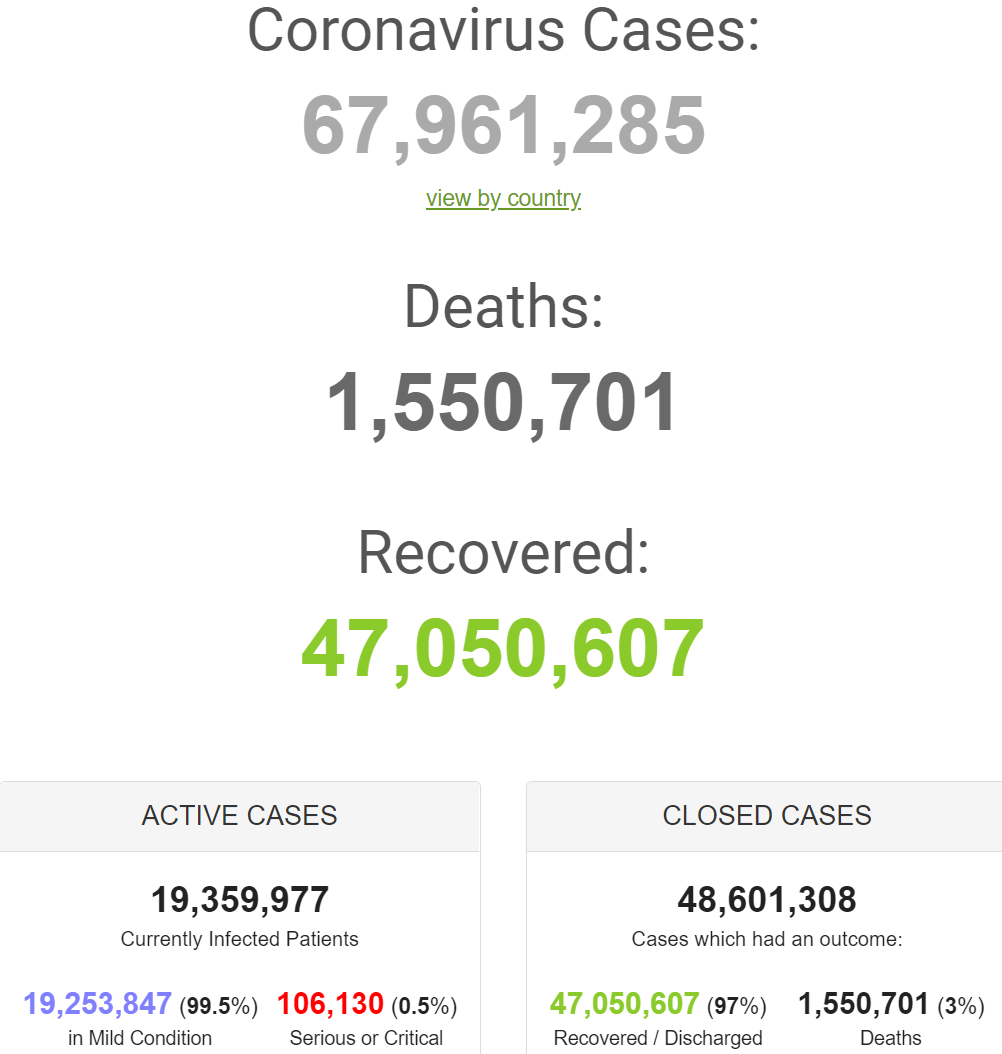
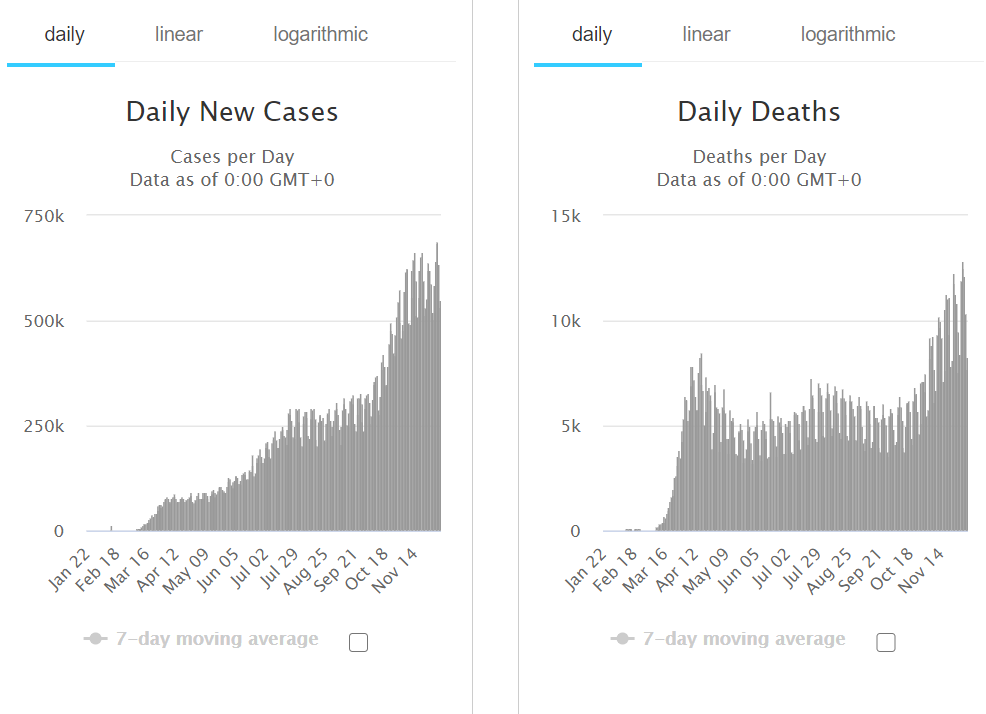
|
Country, |
Total |
New |
Total |
|
World |
67,933,811 |
+533,201 |
1,549,977 |
|
15,370,339 |
+200,085 |
290,474 |
|
|
9,703,908 |
+27,107 |
140,994 |
|
|
6,628,065 |
+24,525 |
177,388 |
|
|
2,488,912 |
+28,142 |
43,597 |
|
|
2,295,908 |
+3,411 |
55,521 |
|
|
1,742,557 |
+13,720 |
60,606 |
|
|
1,737,960 |
+14,718 |
61,434 |
|
|
1,715,700 |
+6,255 |
46,646 |
|
|
1,466,309 |
+3,199 |
39,888 |
|
|
1,377,100 |
+5,997 |
37,995 |
|
|
1,200,006 |
+15,161 |
19,539 |
|
|
1,175,850 |
+7,455 |
109,717 |
|
|
1,067,870 |
+4,423 |
20,181 |
|
|
1,051,374 |
+10,827 |
50,594 |
|
|
975,116 |
+1,204 |
36,324 |
|
|
860,432 |
+32,137 |
15,103 |
|
|
821,947 |
+8,641 |
13,733 |
|
|
817,878 |
+3,313 |
22,249 |
|
|
591,756 |
+1,814 |
17,320 |
|
|
581,550 |
+5,754 |
17,867 |
|
|
566,015 |
+1,815 |
12,460 |
|
|
564,291 |
+7,067 |
9,704 |
|
|
562,142 |
+1,760 |
15,663 |
|
|
551,070 |
+4,237 |
9,036 |
|
|
517,236 |
+3,660 |
12,447 |
|
|
479,743 |
+2,198 |
6,874 |
|
|
441,399 |
+1,574 |
8,572 |
|
|
423,054 |
+7,872 |
12,777 |
|
|
420,294 |
+3,795 |
8,398 |
|
|
381,188 |
+1,531 |
6,320 |
|
|
358,922 |
+209 |
5,977 |
|
|
346,797 |
+1,891 |
2,924 |
|
|
325,071 |
+2,597 |
5,041 |
|
|
305,693 |
+2,263 |
3,897 |
|
|
254,148 |
+3,870 |
5,984 |
|
|
244,069 |
+3,980 |
3,116 |
|
|
241,995 |
+1,014 |
1,614 |
|
|
226,209 |
+6,557 |
2,005 |
|
|
198,244 |
+246 |
13,780 |
|
|
179,230 |
+1,511 |
3,212 |
|
|
177,577 |
+1,148 |
594 |
|
|
164,976 |
+2,501 |
1,540 |
|
|
164,185 |
+2,764 |
5,010 |
|
|
162,067 |
+1,969 |
2,335 |
|
|
152,239 |
+1,886 |
2,233 |
|
|
149,765 |
+3,086 |
1,675 |
|
|
Dominican |
149,138 |
+685 |
2,346 |
|
148,953 |
+1,796 |
1,215 |
|
|
146,421 |
+576 |
1,825 |
|
|
145,560 |
+68 |
8,995 |
|
|
144,599 |
+230 |
897 |
|
|
142,344 |
+407 |
2,344 |
|
|
140,086 |
+178 |
239 |
|
|
138,096 |
+984 |
1,115 |
|
|
136,983 |
+712 |
2,034 |
|
|
125,674 |
+124 |
4,274 |
|
|
125,115 |
+229 |
1,452 |
|
|
118,847 |
+415 |
6,790 |
|
|
117,495 |
+1,130 |
2,438 |
|
|
117,283 |
+552 |
1,018 |
|
|
116,721 |
+1,250 |
3,092 |
|
|
113,735 |
+440 |
1,755 |
|
|
111,023 |
+300 |
2,946 |
|
|
104,904 |
+462 |
924 |
|
|
104,329 |
+327 |
3,596 |
|
|
100,431 |
+1,276 |
2,132 |
|
|
99,758 |
+1,720 |
848 |
|
|
92,649 |
+2,046 |
894 |
|
|
88,825 |
+573 |
2,527 |
|
|
88,723 |
+803 |
1,872 |
|
|
88,579 |
+199 |
1,531 |
|
|
88,111 |
+181 |
341 |
|
|
87,097 |
+517 |
1,243 |
|
|
86,634 |
+15 |
4,634 |
|
|
86,288 |
+483 |
1,796 |
|
|
76,036 |
+1,386 |
637 |
|
|
75,395 |
+422 |
1,297 |
|
|
74,468 |
+222 |
2,099 |
|
|
74,294 |
+1,600 |
384 |
|
|
74,053 |
+149 |
611 |
|
|
69,645 |
+390 |
1,181 |
|
|
68,332 |
+364 |
1,949 |
|
|
58,273 |
+13 |
29 |
|
|
43,683 |
+695 |
922 |
|
|
40,345 |
+214 |
1,164 |
|
|
38,703 |
+380 |
359 |
|
|
38,562 |
+316 |
543 |
|
|
38,476 |
+261 |
360 |
|
|
5,325 |
+1 |
117 |
|
|
4,966 |
+1 |
45 |
|
|
4,107 |
+21 |
60 |
|
|
1,367 |
+1 |
35 |
Retrieved from: https://www.worldometers.info/coronavirus/
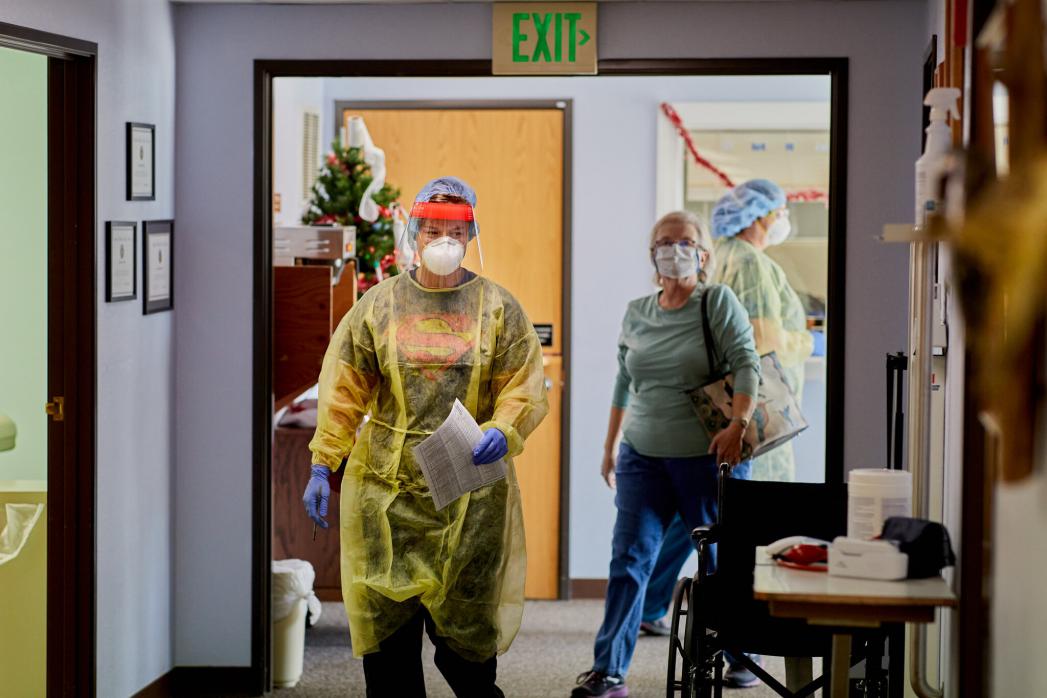
Healthcare workers at Lincoln Community Hospital in Hugo, Colorado, on Tuesday.Credit...Stephen Speranza for The New York Times
The United States has recorded its most coronavirus-related deaths over a weeklong period, as a brutal surge gathers speed across the country.
With a seven-day average of 2,249 deaths, the country broke the previous mark of 2,232 set on April 17 in the early weeks of the pandemic. Seven-day averages can provide a more accurate picture of the virus’s progression than daily death counts, which can fluctuate and disguise the broader trend line.
The United States is approaching 300,000 total deaths, with nearly 283,000 recorded, according to a New York Times database. The nation is averaging nearly 200,000 cases per day, an increase of 15 percent from the average two weeks earlier, and has recorded over 15 million total cases.
Much has changed since the previous peak in April. The coronavirus is no longer concentrated in big urban areas like New York City and now envelops much of the country, including rural areas that had avoided it for several months.
Many of the hardest-hit counties on a per person basis are now in the Midwest. North Dakota, where one in every 10 residents has contracted the virus, has the highest total reported cases by population, followed closely by South Dakota, Iowa, Wisconsin and Nebraska.
The latest wave to hit the United States has hospitalized record numbers. Each day since Dec. 2, more than 100,000 Covid-19 patients were in hospitals. That far surpasses the number of people hospitalized during the peaks spring and summer, which at their worst had nearly 60,000 Americans in the hospital daily.
The new peak also comes as the nation prepares for holiday celebrations, and as colder temperatures may push people to congregate indoors. Infectious-disease experts have warned that trends in the United States, which reported a record 2,885 deaths on Wednesday, could continue to worsen over the next several weeks.
Against the warnings of public health officials, millions of Americans traveled over the Thanksgiving holiday, stoking fears that another wave of travel could accompany this month’s celebrations.
And even without traveling far, gatherings between people from different households pose a risk.
“These are going to be perfect scenarios for replication of the virus,” said Dr. Fadi Al Akhrass, an infectious-disease specialist at Pikeville Medical Center in Kentucky.
Dr. Al Akhrass said people seemed more willing to accept the severity of the virus than they were in April, but that “everybody learned the hard way.”
“The value of Christmas is what we give, not what we take — this is something we need to consider this season,” he said. “Giving up on large gatherings will probably be the best gift of them all.”
Retrieved from: https://www.nytimes.com/live/2020/12/08/world/covid-19-coronavirus/the-us-has-recorded-its-most-deaths-in-a-week
From CNN's Ivana Kottasová
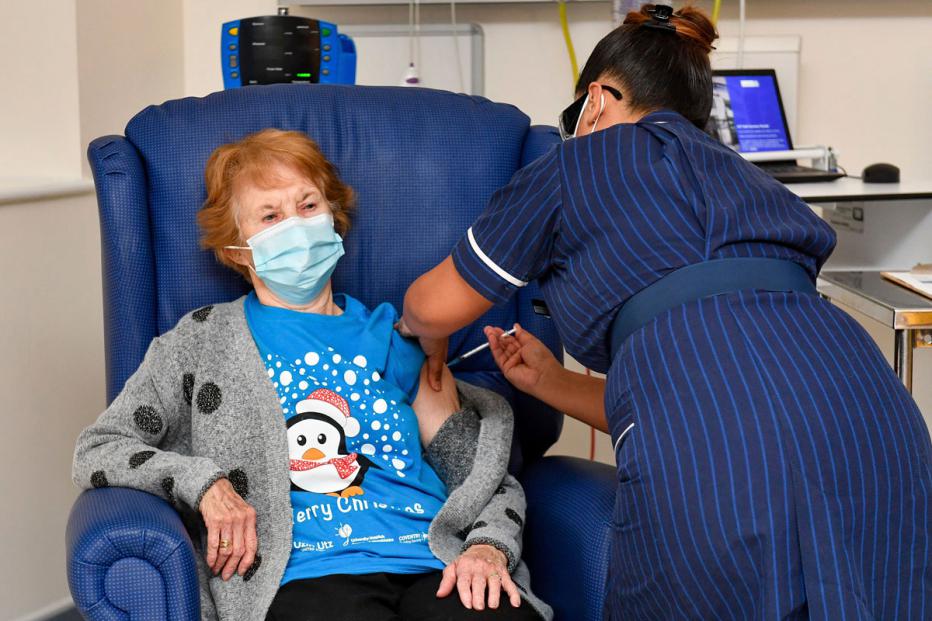
Margaret Keenan, the first patient in the UK to receive the Pfizer-BioNTech Covid-19 vaccine, receives a shot at University Hospital in Coventry, England on Dec. 8. Jacob King/Pool/AP
The United Kingdom has become the first Western nation to begin vaccinating its citizens with a Covid-19 shot outside of clinical trials -- a landmark moment in the coronavirus pandemic.
The first Briton to get the Pfizer/BioNTech vaccine -- 90-year-old Margaret Keenan -- received the first of two doses at University Hospital in Coventry, less than a week after the UK became the first country to approve it.
Staggered rollout: The UK has ordered 40 million doses of the vaccine, but only 800,000 shots will be available as part of the first wave that began on Tuesday.
The roll out will be gradual, due to the vast logistical challenges of manufacturing and distributing tens of millions of vaccines. For now, it is available by invitation only for those age 80 and over, care homes staff and frontline health and social care workers. Care home residents were also expected to be prioritized, but the government said last week this won't happen immediately.
Double dose: The vaccine requires two doses administered at least three weeks apart, so Keenan will have to go back for the second dose in three or four weeks' time. Seven to 10 days after the second dose, she should be protected against the virus.
That means the UK will have enough shots to vaccinate roughly a third of the country's population.
The country has also ordered 7 million doses of the Moderna vaccine, which could be approved for emergency use in the UK within the next few weeks.
From CNN Health’s Shelby Lin Erdman
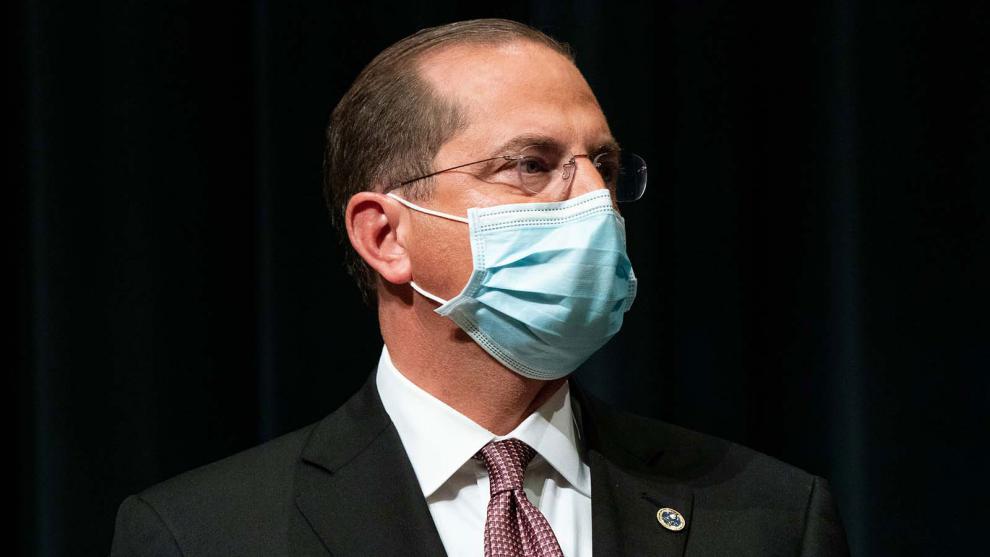
Alex Azar, secretary of Health and Human Services, listens during a news conference at the CDC Roybal Campus in Atlanta, on Wednesday, Oct. 21. Elijah Nouvelage/Bloomberg via Getty Images
The US federal government’s goal is to make coronavirus vaccines like getting a flu shot, Health and Human Services Secretary Alex Azar said Monday.
“We distribute over 90 million vaccines a year that are (included in) CDC’s Vaccines for Children program,” Azar said in an interview with Axios.
Azar said the government’s Covid-19 vaccine distribution plan includes “leveraging what works using the familiar names, the Walgreens, CVS, the hospitals, the community health centers that we have.”
“We want to make this eventually so it's as much like getting your flu vaccine as possible,” he said.
“In terms of vaccine hesitancy, we've seen increasing levels of vaccine confidence even just in the last month,” he added.
Azar predicted vaccine hesitancy will decrease and confidence will increase over time.
“First, the data is so exceptional on these vaccines -- 94% plus efficacy,” he said. “Second, we now have an independent country with an independent regulator on the Pfizer vaccine saying it's safe and effective for use by their people.”
The United Kingdom gave emergency authorization to Pfizer’s Covid-19 vaccine last week and will begin rolling out the shots Tuesday.
“The American people, that should bring reassurance to them. A highly separate process has also validated this and I've made clear there are five independent checks in the system that we have built to ensure there is no politicization of the vaccine program here,” Azar said.
Azar said he expects a Covid-19 vaccine to be widely available across the US by the second quarter of 2021.
“My expectation is that next year we return to normalcy in our lives, thanks to the incredible work of Operation Warp Speed and these vaccines, as well as the therapeutics,” he said.
From CNN's Maggie Fox

National Center for Immunization and Respiratory Diseases Director Nancy Messonnier speaks during a news conference at the Department of Health and Human Services on Jan. 28 in Washington, D.C. Samuel Corum/Getty Images
A top Centers for Disease Control and Prevention official who has been largely silenced through the pandemic spoke out Monday and said she hopes her agency will be able to communicate more openly next year and regain the public’s trust.
“When I walk into the office at CDC, which I am maybe once a week, there's a pledge on the wall in big letters," the CDC’s Dr. Nancy Messonnier said in a “Fireside Chat” with the Aspen Institute.
"It's the CDC pledge to the American public and one of the things it says is that we base all public health decisions on the highest quality scientific data that is derived openly and objectively, to place the benefit to society above the benefit of our institution."
Messonnier, the director of the CDC’s National Center for Immunization and Respiratory Diseases, has in past disease outbreaks and epidemics been front and center briefing reporters and the public about diseases and the efforts to fight them. She has barely been seen since she last briefed reporters in March.
Asked about this, Messonnier said she hoped that would change.
“What I hope for next year is that CDC and our staff will be able to communicate regularly and consistently across all levels of the government,” she said.
“And that by doing that, by being transparent about the vaccine process, we will be able to regain the trust of the American public, health transparency through the vaccine process will encourage people to get vaccinated.”
Many public health experts have complained that the Trump administration has sidelined the CDC and its usual role in educating the public about disease outbreaks. President-elect Joe Biden has pledged to take the coronavirus pandemic response in a dramatically different direction.
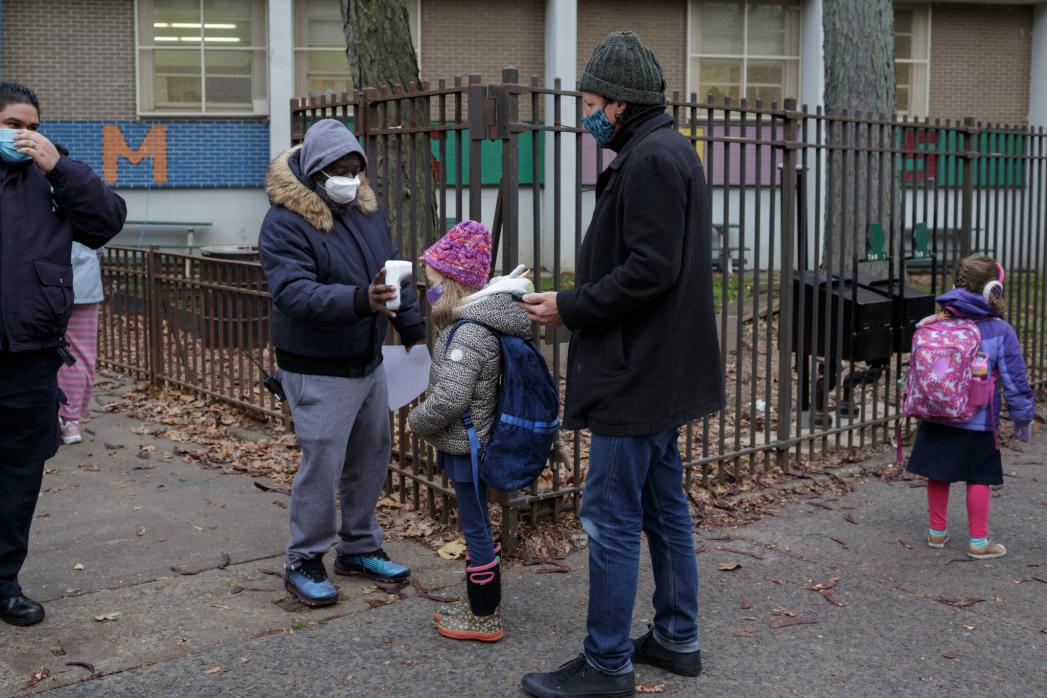
Students having their temperatures checked before entering Public School 316 in Brooklyn on Monday.Credit...Anna Watts for The New York Times
New York City is reopening some of its public schools Monday in the teeth of a worsening coronavirus outbreak.
The decision to do so reflects changing public health thinking around the importance of keeping schools operating, particularly for young students, and the real-world experience of over two months of in-person classes in the city’s school system, the nation’s largest.
Schools around the country have had to make the difficult decision of when to close and what metrics to follow, with some staying open amid local positivity rates in the teens and others using low single-digit thresholds.
Of the nation’s 75 largest public school districts, 18 have gone back to remote learning in the past month, according to data compiled by the Council of the Great City Schools and reported in The Wall Street Journal.
In California, many of the biggest school districts were already closed before new restrictions took effect on Sunday in three regions of the state. The new restrictions include stay-at-home orders, but do not require schools that had reopened to close again (an earlier version of this item incorrectly said they do). In the last week, California has reported more than 150,000 new cases, a record for all states.
Decisions to shutter schools have often been made on the local level and in inconsistent ways. Some schools have “paused” for short periods of time — as was the case in dozens of Central Texas districts or recently in Delaware, at the governor’s suggestion. Others have opted for blended learning with some days in school and some days remote.
Many have endured jarring periods of closing, opening and closing again. All of the solutions seem to be leading to burnout, instability and turmoil. New York City students, parents and teachers have felt their own whiplash, from a full shutdown before Thanksgiving to a partial reopening less than three weeks later.
Mayor Bill de Blasio has committed himself to keeping schools open, his aides say, and has started with elementary schools and those for students with severe disabilities. (About 190,000 children in the grades and schools the city is reopening this week would be eligible.)
Three of the country’s largest districts — in Birmingham, Ala., Tulsa, Okla., and Wichita, Kan. — made the opposite decision and closed over the past week. In Birmingham, the superintendent said the pandemic was “drastically impacting our community and our schools.” In Tulsa, two public school employees died recently after testing positive for the virus. And several of Wichita’s public schools had so many staff members quarantined that they could hardly cover vacancies by the time the district decided to close, the superintendent said.
The United States has diverged from other countries around the world in closing schools but leaving indoor dining and bars open. Many parents have criticized that situation, saying that risks of infection are higher in restaurants and bars and that it prioritizes the economy over education. Across Europe and Asia, students, especially very young ones, have largely continued going to school while other parts of daily life have shut down.
While Mr. de Blasio’s decision was applauded by many parents, there is no guarantee that the pattern of chaos that they have faced will abate as the fall turns to winter. New York City’s rules for handling positive cases all but guarantee frequent and sudden closures of individual classrooms and school buildings.
And it remains unclear whether the city will be able to reopen its middle and high schools to in-person learning any time soon.
One thing that could hamper the city’s efforts, officials cautioned, is a truly rampant second wave in New York.
The test positivity rate has only increased since the city closed schools, and the seven-day rolling average rate exceeded 5 percent last week. Hospitalizations have quickly mounted. Still, Mr. de Blasio said on Monday that “the schools in this city are among the safest places to be.” He noted that later this week the city planned to reopen some schools on Staten Island, even though the borough has seen positive infection test rates surge recently.
The French health ministry’s top official, Jérôme Salomon, has backed up the bleak assessment attributed to the health minister, Olivier Véran, earlier, who said the country was unlikely to meet the conditions required for ending its national lockdown on 15 December.
“For the last few days, the level of infections has stopped falling,” Salomon told a press conference.
Two government sources told Reuters earlier that France may have to delay unwinding some Covid-19 lockdown restrictions next week after signs that the downward trend in new infections had flattened out.
On Monday, French health authorities reported 3,411 new infections over the past 24 hours, sharply down from Sunday’s 11,022, but the number of people hospitalised for the disease increased for the second day – the first time it has done so in three weeks.
The Monday figures tend to dip as there are fewer tests conducted on Sundays. The seven-day moving average of new infections, which averages out weekly data reporting irregularities, stood at 10,489.
France’s cumulative number of cases now totals 2,295,908, the fifth highest tally in the world.
Here are the key developments from the last few hours:
· The UK is set to administer the first doses of the Pfizer/BioNTech vaccine on Tuesday, with the NHS giving top priority to people over the age of 80, frontline healthcare workers and care home staff and residents.
· Hong Kong to impose new virus restrictions. Hong Kong will ban evening dining at restaurants and close fitness centres, the city’s leader said Tuesday, as part of new measures aimed at stemming a fourth wave of coronavirus infections. Chief Executive Carrie Lam said the rules aim to reduce the “number of people on the streets”, echoing moves taken by authorities when cases spiked earlier this year.
· The World Health Organization said Monday that persuading people on the merits of a Covid-19 vaccine would be far more effective than trying to make the jabs mandatory. The WHO said it would be down to individual countries as to how they want to conduct their vaccination campaigns against the coronavirus pandemic.
· South Korea ordered vaccines for 44 million people. According to Yonhap, South Korea has secured 64 million doses for 44 million people (three of the vaccines need two shots). Vaccines for 34 million will come directly from the drugmakers and 10 million via the WHO. The vaccines ordered are sufficient to cover 88% of the population.
· US President Donald Trump will sign an executive order on Tuesday to ensure that priority access for Covid-19 vaccines is given to the American people, for doses procured by the US government, before assisting other nations, senior administration officials said on Monday.
· Armed police raid home of Florida scientist fired over Covid-19 data. Rebekah Jones, the Florida data scientist embroiled in a dispute with the state’s Republican governor over the handling of coronavirus figures, had her home raided on Monday by armed police who confiscated her computers.
· India reports lowest daily rise in coronavirus cases since 10 July. India reported 26,567 new coronavirus infections, data from the health ministry showed on Tuesday, the lowest daily increase since July 10. Daily cases have been falling in India since hitting a peak in September. The country has 9.7 million cases, second-highest caseload in the world after the United States. Deaths rose by 385, the health ministry said, with the total now at 140,958.